Is Exodus Propulsion Technologies Publicly Traded? No, Exodus Propulsion Technologies is not currently a publicly traded company, but this exciting area of aerospace innovation is garnering attention. Pioneer-technology.com keeps you updated on emerging propulsion systems, including those from private ventures, highlighting how electrostatic principles can revolutionize space travel and other advanced technologies.
1. Understanding Exodus Propulsion Technologies
What is Exodus Propulsion Technologies and what are they working on? Exodus Propulsion Technologies is an innovative company focusing on developing field-effect propulsion systems. These systems use electrostatic pressure to generate thrust without needing traditional fuel or ejection mass. Dr. Charles Buhler, NASA’s subject matter expert on electrostatics, leads their research, making their work particularly noteworthy.
Dr. Buhler’s work builds on asymmetrical electrostatic pressure. He detailed this in International Patent WO2020159603A2, which describes a method for creating force using a voltage difference across conductive surfaces. This voltage generates an electric field, resulting in electrostatic pressure that propels an object. The force’s magnitude depends on the geometry of the surfaces, the applied voltage, and the materials between the electrodes.
1.1 Buhler’s Background and Expertise
What is Dr. Buhler’s background? Dr. Buhler brings extensive experience from his work with electrostatic discharge and safety on major NASA projects like the Space Shuttle Program, the International Space Station, and the Hubble Space Telescope. He also contributed to NASA’s Mars Exploration Program and is currently involved in NASA’s Dust Project, which aims to use electrostatics to remove dust from equipment bound for the Moon.
1.2 Key Technology Behind Exodus Propulsion
How does Exodus Propulsion Technologies’ patented technology work? The patented technology centers on creating a net electrostatic pressure force by applying a voltage difference across electrically conductive surfaces. This force is influenced by the geometry of the conductive surfaces, the voltage applied, and the dielectric constant of any materials present. This method could potentially power spacecraft using only electrical fields, offering a lighter, more efficient alternative to traditional fuel-based systems.
2. The Science Behind Electrostatic Propulsion
How does electrostatic propulsion work? Electrostatic propulsion harnesses the power of electric fields to generate thrust. Unlike traditional propulsion methods that rely on burning fuel and expelling mass, electrostatic propulsion manipulates electric charges to create motion. This approach can be more efficient and lighter, making it ideal for space travel where minimizing mass is crucial.
2.1 Overcoming Early Limitations
What challenges did Exodus Propulsion Technologies face in the early stages of development? In early experiments, the thrust generated by Exodus Propulsion Technologies’ system was significantly weaker than the mass of the test article. In 2019, the system’s force was 100,000 times weaker. However, recent developments have focused on reducing the system’s mass while maintaining thrust, dramatically improving performance.
2.2 Experimental Results and Future Potential
What are the experimental results and what could they mean for the future? Early tests showed a thrust of about 300-400 micronewtons. The company claims forces exceeding the test mass, potentially reaching 1 millinewton with a 0.1 gram test article. If the thrust can be increased to 1 newton, a 100 gram object could levitate, demonstrating the system’s strong potential for orbital applications.
 Electrostatic Propulsion System Diagram
Electrostatic Propulsion System Diagram
Caption: Diagram of an electrostatic propulsion system, highlighting the key components and principles of operation.
3. Current Status and Future Plans
What is the current status and future plans of Exodus Propulsion Technologies? Exodus Propulsion Technologies is currently focused on refining its electrostatic propulsion technology. They have moved their experiments into high-vacuum systems to reduce noise and improve accuracy. Their next steps involve optimizing the chemistry of their devices to enhance charge injection and exploring RF-based versions to increase force using AC.
3.1 Milestones and Demonstrations
What milestones has Exodus Propulsion Technologies achieved? Exodus Propulsion Technologies has made significant strides in reducing the mass of their propulsion system while maintaining thrust. They have successfully measured forces in milliNewtons and are working towards demonstrating a self-lifting system. A key goal is to conduct an orbital test of their technology, which would cost between $500,000 and $1 million.
3.2 Research and Collaboration
Who are the key people involved in the research, and who are they collaborating with? Key figures include Dr. Charles Buhler and Andrew Neil Aurigema, who are both named on the patent for the technology. While specific collaborations aren’t detailed, Dr. Buhler’s ongoing work with NASA suggests potential partnerships with the agency.
4. Investment and Public Trading Landscape
What does the investment and public trading landscape look like for breakthrough propulsion technologies? The investment landscape for breakthrough propulsion technologies is complex. Many companies in this sector are privately held due to the high risks and long development timelines. However, the potential rewards are enormous, attracting interest from venture capitalists, angel investors, and government agencies like NASA and the Department of Defense.
4.1 Publicly Traded Alternatives in Aerospace
What publicly traded alternatives exist for investing in aerospace and propulsion? While Exodus Propulsion Technologies remains private, there are several publicly traded companies in the aerospace sector that investors can consider:
| Company Name | Stock Symbol | Description |
|---|---|---|
| Boeing | BA | One of the world’s largest aerospace companies. |
| Lockheed Martin | LMT | A global security and aerospace company. |
| SpaceX | Private, but worth noting for its advancements in space tech. | |
| Northrop Grumman | NOC | Focuses on defense and aerospace systems. |
| Virgin Galactic | SPCE | Develops commercial spacecraft and aims to provide spaceflights. |
4.2 Analyzing the Market for Emerging Technologies
How can one analyze the market for emerging technologies like exodus propulsion? Analyzing the market involves assessing the technology’s potential impact, regulatory hurdles, and competitive landscape. Investors should look for companies with strong intellectual property, experienced leadership, and a clear path to commercialization. Additionally, monitoring government funding and partnerships can provide insights into the technology’s viability and support.
5. Potential Applications of Exodus Propulsion
How could Exodus Propulsion impact space travel and beyond? Exodus Propulsion’s technology could significantly reduce the cost and complexity of space missions by eliminating the need for large quantities of fuel. This would allow for smaller, more agile spacecraft and potentially enable long-duration missions to distant planets.
5.1 Applications in Space Exploration
What are the specific applications in space exploration? Specific applications include:
- Satellite Propulsion: Providing efficient station-keeping and orbit adjustments for satellites.
- Deep Space Missions: Enabling faster and more cost-effective travel to other planets.
- Space Debris Removal: Developing systems to deorbit space junk, addressing a growing environmental concern.
5.2 Broader Applications Beyond Aerospace
Beyond aerospace, what are other possible applications? The technology could also find applications in:
- High-Altitude Drones: Powering drones that can operate at very high altitudes for extended periods.
- Electric Aircraft: Contributing to the development of lighter, more efficient electric propulsion systems for aircraft.
- Nanotechnology: Utilizing the technology’s principles at the nanoscale for various applications in materials science and engineering.
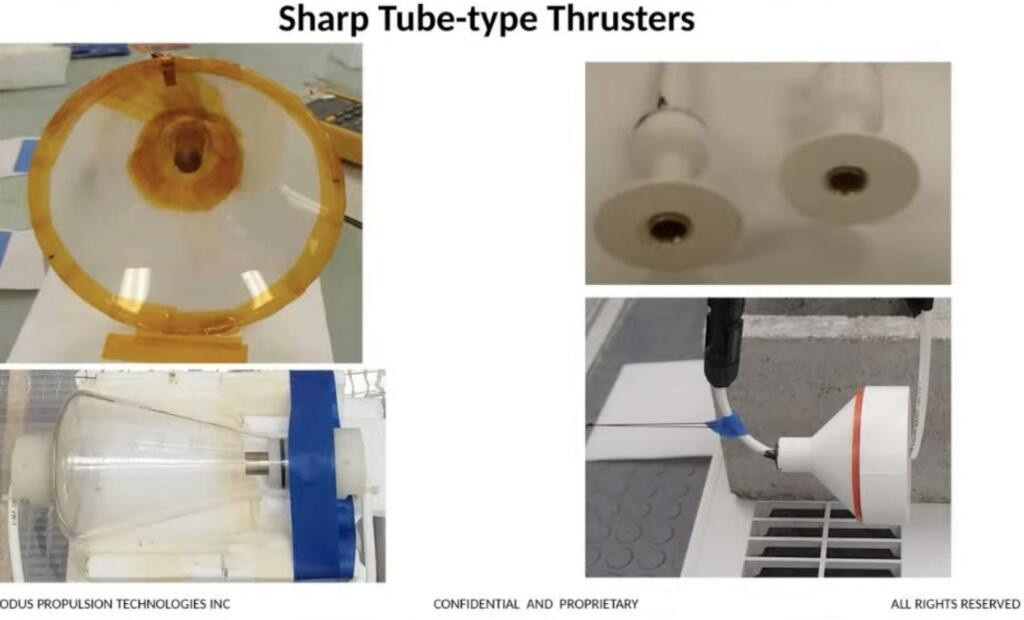 Conceptual Image of Spacecraft Using Electrostatic Propulsion
Conceptual Image of Spacecraft Using Electrostatic Propulsion
Caption: A conceptual image of a spacecraft utilizing electrostatic propulsion technology for deep space travel.
6. The Role of Pioneer-Technology.com
How does pioneer-technology.com cover emerging technologies like exodus propulsion? Pioneer-technology.com is dedicated to providing in-depth coverage of emerging technologies, including breakthrough propulsion systems. We offer detailed analyses, expert interviews, and the latest news on companies like Exodus Propulsion Technologies, helping our audience stay informed about the future of technology.
6.1 Expert Analysis and Insights
What expert analysis and insights can readers find on pioneer-technology.com? Our site features articles from industry experts, providing insights into the technical and market aspects of emerging technologies. We break down complex concepts, assess the potential impacts, and offer informed opinions on the future of these technologies.
6.2 Staying Updated on Technological Advancements
How can readers stay updated on the latest technological advancements? Readers can subscribe to our newsletter, follow us on social media, and regularly visit our website for the latest updates. We cover a wide range of topics, from artificial intelligence and biotechnology to space exploration and renewable energy, ensuring our audience stays ahead of the curve.
7. The Future of Propulsion Technologies
What does the future hold for propulsion technologies? The future of propulsion technologies is poised for significant advancements. As companies like Exodus Propulsion Technologies continue to innovate, we can expect to see more efficient, sustainable, and potentially revolutionary methods of propulsion.
7.1 Promising Developments
What are some of the most promising developments in the field? Promising developments include:
- Fusion Propulsion: Developing fusion reactors for space travel, offering potentially limitless energy.
- Antimatter Propulsion: Exploring the use of antimatter for incredibly high-speed propulsion.
- Advanced Ion Drives: Improving the efficiency and thrust of ion propulsion systems.
7.2 Challenges and Opportunities
What are the main challenges and opportunities in advancing propulsion? The main challenges include overcoming technical hurdles, securing funding, and navigating regulatory landscapes. However, the opportunities are vast, ranging from revolutionizing space travel to enabling new industries on Earth.
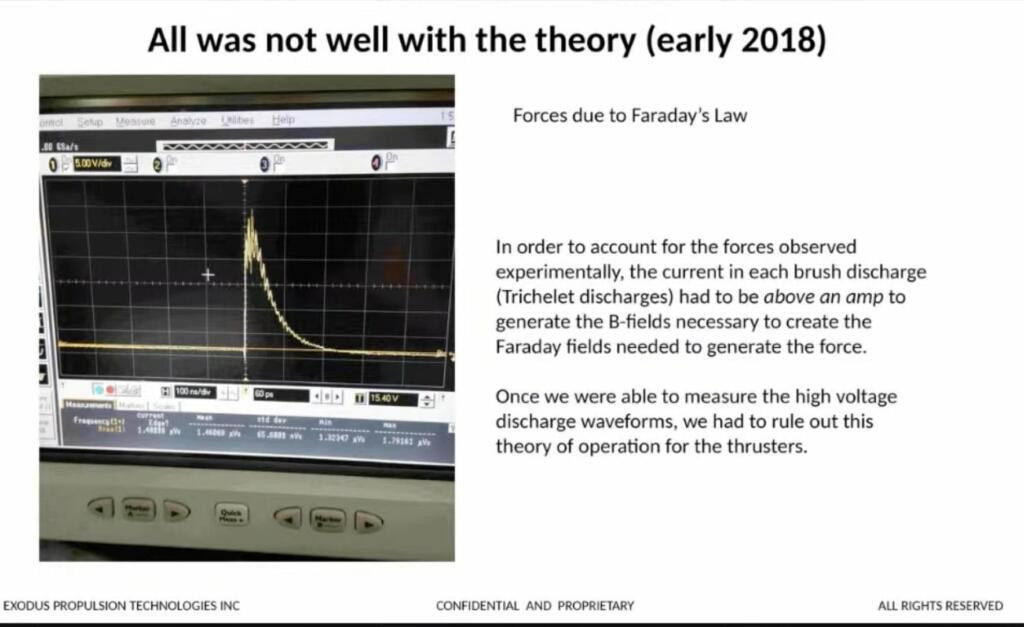 Diagram of Asymmetrical Electrostatic Pressure Device
Diagram of Asymmetrical Electrostatic Pressure Device
Caption: A detailed diagram of an asymmetrical electrostatic pressure device, illustrating the principles behind its operation.
8. The Impact of Nanotechnology
How does nanotechnology play a role in the development of advanced propulsion systems? Nanotechnology enables the creation of materials and devices at the atomic and molecular levels, which can significantly enhance the performance of propulsion systems. For instance, carbon nanotubes, as mentioned in Exodus Propulsion Technologies’ patent, can be used to create nanoscale thrusters with enhanced efficiency and control.
8.1 Applications of Nanomaterials
How are nanomaterials being applied in propulsion technology? Nanomaterials are being applied in various ways:
- Lightweight Structures: Creating incredibly strong and lightweight components for spacecraft, reducing overall mass.
- High-Efficiency Electrodes: Developing electrodes with improved conductivity and surface area for electrostatic propulsion.
- Advanced Sensors: Integrating nanosensors for precise monitoring and control of propulsion systems.
8.2 Future Trends in Nanotechnology and Propulsion
What are the future trends in nanotechnology and propulsion? Future trends include:
- Self-Healing Materials: Developing materials that can repair themselves, increasing the lifespan of spacecraft.
- 3D-Printed Nanostructures: Creating complex nanostructures using 3D printing techniques for customized propulsion solutions.
- Quantum Computing for Design: Using quantum computing to design and optimize nanomaterials for propulsion.
9. Exploring Theoretical Frameworks
What theoretical frameworks support the development of new propulsion methods? The development of new propulsion methods relies on solid theoretical frameworks, including electrostatics, electromagnetism, and quantum mechanics. These theories provide the foundation for understanding and manipulating the forces that drive propulsion systems.
9.1 The Physics Behind Field-Effect Propulsion
Can you explain the physics behind field-effect propulsion? Field-effect propulsion uses electric fields to generate thrust. By creating an asymmetry in the electric field around a conductive object, a net force is produced, propelling the object forward. This force is influenced by the strength of the electric field, the geometry of the object, and the properties of the surrounding medium.
9.2 RF-Based Propulsion Systems
How do RF-based propulsion systems work? RF-based propulsion systems use radio frequency (RF) energy to create thrust. These systems can generate strong electric fields that accelerate charged particles, producing a propulsive force. RF-based systems have the potential to achieve high thrust and efficiency, making them attractive for space travel.
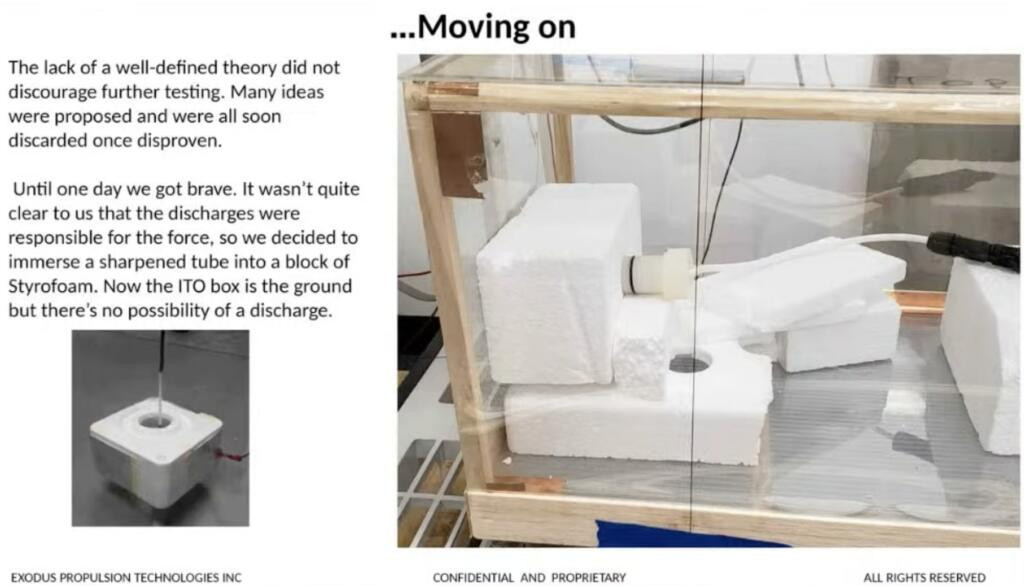 Close-up of Electrostatic Propulsion Device
Close-up of Electrostatic Propulsion Device
Caption: A close-up view of an electrostatic propulsion device, showcasing the intricate details of its construction.
10. The Business of Space Exploration
What are the business aspects of space exploration and how do they relate to propulsion technology? The business of space exploration is rapidly evolving, with increasing private sector involvement. Companies like SpaceX and Blue Origin are pushing the boundaries of what is possible, creating new opportunities for innovation and investment.
10.1 Private Sector’s Role
What is the role of the private sector in advancing space exploration? The private sector is playing a crucial role by:
- Reducing Costs: Developing more cost-effective launch systems and spacecraft.
- Driving Innovation: Introducing new technologies and approaches to space exploration.
- Creating New Markets: Opening up new markets for space tourism, resource extraction, and satellite services.
10.2 Government and Commercial Synergies
How can government and commercial entities work together effectively? Government and commercial entities can work together by:
- Public-Private Partnerships: Collaborating on research and development projects.
- Technology Transfer: Sharing technologies and expertise between government and private sectors.
- Regulatory Frameworks: Establishing clear and supportive regulatory frameworks for space activities.
11. Patent Insights
What can the patents tell us about the technologies being developed? Patents offer valuable insights into the technologies being developed by companies like Exodus Propulsion Technologies. By examining the patent claims, descriptions, and diagrams, we can gain a deeper understanding of the underlying principles and potential applications of these technologies.
11.1 Analyzing WO2020159603A2
What are the key elements of the WO2020159603A2 patent? The WO2020159603A2 patent describes a system and method for generating force from a voltage difference applied across electrically conductive surfaces. The patent covers the geometry of the conductive surfaces, the applied voltage, and the dielectric constant of any material present in the gap between electrodes.
11.2 Implications of Patent Claims
What are the implications of these patent claims for the future of propulsion technology? The patent claims suggest a novel approach to generating thrust without the need for traditional fuel or ejection mass. This could lead to more efficient and sustainable propulsion systems for space travel and other applications.
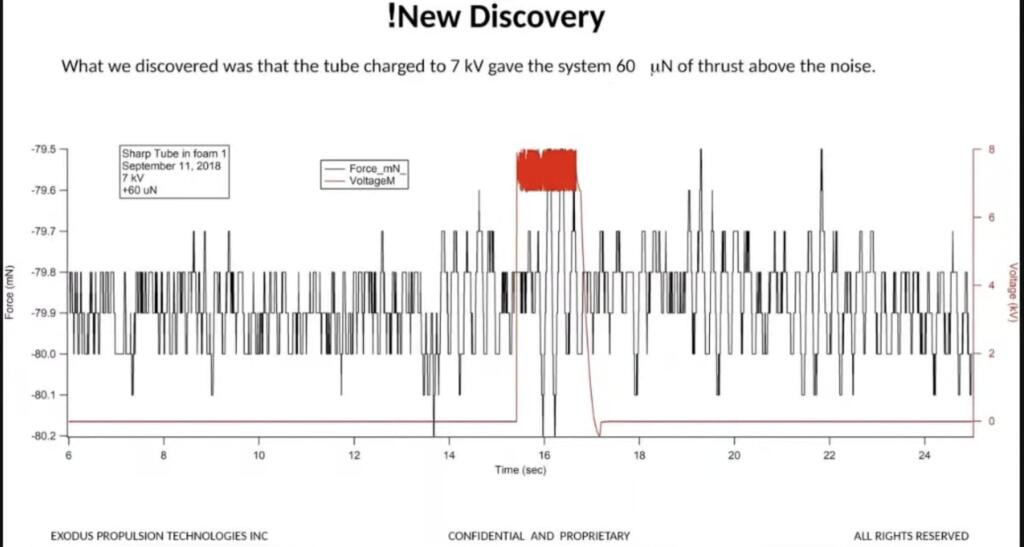 Diagram of Voltage Application in Electrostatic Propulsion
Diagram of Voltage Application in Electrostatic Propulsion
Caption: Illustrative diagram detailing the application of voltage in an electrostatic propulsion device.
12. Challenges in Measuring Thrust
What are the challenges in accurately measuring thrust in advanced propulsion systems? Accurately measuring thrust in advanced propulsion systems is a significant challenge due to the small forces involved and the need for precise experimental setups. Factors such as noise, vibration, and environmental conditions can affect the accuracy of measurements.
12.1 Mitigating Noise and Vibration
How are researchers working to mitigate noise and vibration in thrust measurements? Researchers are using various techniques to mitigate noise and vibration:
- High-Vacuum Systems: Conducting experiments in high-vacuum environments to eliminate air resistance and other disturbances.
- Vibration Isolation: Using vibration isolation tables and other devices to minimize external vibrations.
- Advanced Sensors: Employing highly sensitive sensors that can detect small changes in force.
12.2 Experimental Systems
Can you describe the experimental systems used for accurate measurements? Experimental systems typically include:
- Thrust Stands: Precisely calibrated thrust stands that can measure small forces.
- Vacuum Chambers: High-vacuum chambers that simulate the conditions of space.
- Data Acquisition Systems: Sophisticated data acquisition systems that can record and analyze experimental data.
13. The Visionary Insights of Dr. Charles Buhler
What are the visionary insights that Dr. Charles Buhler brings to the field? Dr. Charles Buhler’s expertise in electrostatics and his experience with NASA programs provide valuable insights into the development of advanced propulsion systems. His focus on field-effect propulsion and his innovative approach to generating thrust without fuel are driving the field forward.
13.1 Optimizing Charge Injection
How is Dr. Buhler working to optimize charge injection in his devices? Dr. Buhler is optimizing charge injection by:
- Exploring Different Materials: Investigating various materials with high charge injection capabilities.
- Optimizing Chemistry: Tuning the chemistry of his devices to enhance charge injection.
- Microscopic Systems: Developing microscopic systems that can generate high forces.
13.2 Future Directions of Research
What are the future directions of his research? Future research directions include:
- RF-Based Systems: Exploring RF-based versions of his devices to increase thrust.
- Dielectric Limits: Investigating the dielectric limits of his devices to optimize performance.
- Orbital Testing: Conducting orbital tests to validate his technology in space.
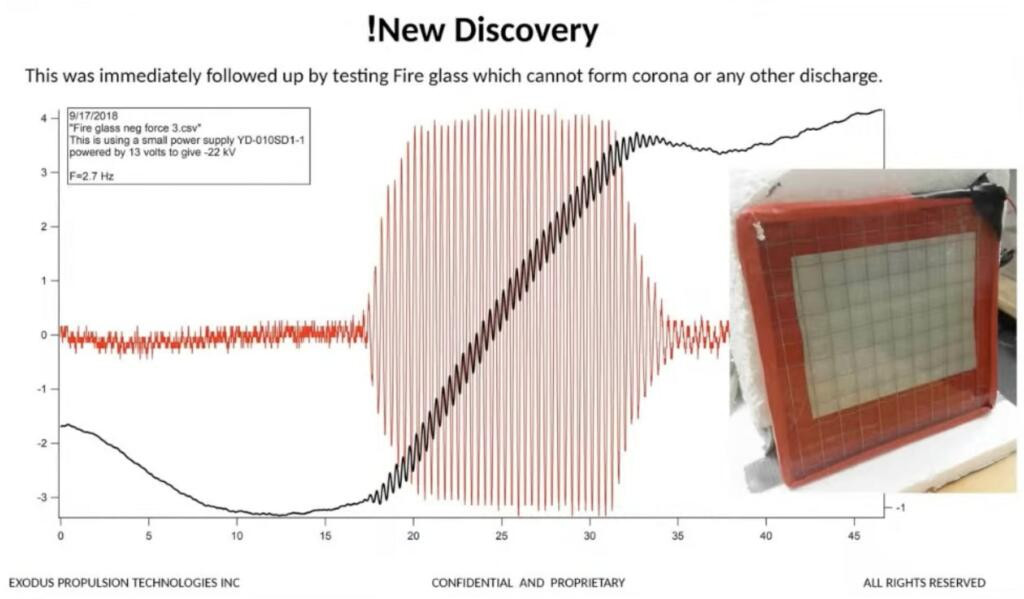 Diagram of Free and Bound Charges in Electrostatic Propulsion
Diagram of Free and Bound Charges in Electrostatic Propulsion
Caption: Diagram illustrating the concept of free and bound charges in the context of electrostatic propulsion.
14. Alternatives to Traditional Fuels
What are the alternatives to traditional fuels for space propulsion? Alternatives to traditional fuels include:
- Ion Propulsion: Using electric fields to accelerate ions, generating thrust.
- Solar Sails: Harnessing the power of sunlight to propel spacecraft.
- Nuclear Propulsion: Using nuclear reactions to generate heat and thrust.
14.1 Fusion Reactors
How might fusion reactors revolutionize space travel? Fusion reactors could revolutionize space travel by providing a virtually limitless source of energy. This would enable spacecraft to travel faster and farther, opening up new possibilities for space exploration.
14.2 Antimatter Propulsion
What are the challenges in using antimatter for propulsion? The challenges in using antimatter for propulsion include:
- Production: Producing antimatter is incredibly difficult and expensive.
- Storage: Storing antimatter is challenging due to its tendency to annihilate upon contact with matter.
- Safety: Handling antimatter requires extreme safety precautions to prevent accidental annihilation.
15. The Economics of Space Travel
How does advanced propulsion technology affect the economics of space travel? Advanced propulsion technology can significantly reduce the cost of space travel by:
- Reducing Fuel Consumption: Lowering the amount of fuel needed for missions.
- Increasing Payload Capacity: Allowing spacecraft to carry more payload.
- Enabling Longer Missions: Making it possible to conduct longer and more ambitious missions.
15.1 Cost-Effective Space Missions
What makes space missions more cost-effective? Several factors contribute to cost-effective space missions:
- Reusable Rockets: Developing reusable rockets that can be launched multiple times.
- Standardized Components: Using standardized components to reduce manufacturing costs.
- Efficient Propulsion: Employing efficient propulsion systems that minimize fuel consumption.
15.2 Investment Opportunities
Where are the key investment opportunities in space exploration? Key investment opportunities include:
- Launch Services: Companies that provide launch services for satellites and spacecraft.
- Satellite Manufacturing: Companies that manufacture satellites for communication, observation, and navigation.
- Space Tourism: Companies that offer space tourism experiences.
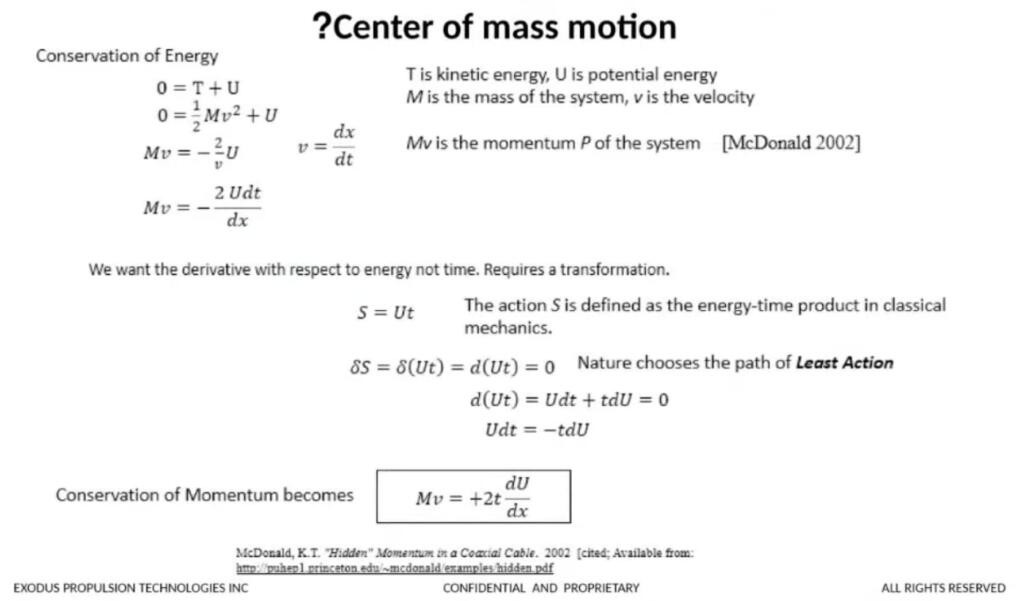 Experimentation in High Vacuum System
Experimentation in High Vacuum System
Caption: Image of experimentation being conducted in a high-vacuum system, crucial for accurate measurements in propulsion research.
16. The Role of Universities
How do universities contribute to propulsion technology advancements? Universities play a critical role in advancing propulsion technology by:
- Conducting Research: Performing basic and applied research in propulsion systems.
- Training Engineers: Educating and training the next generation of aerospace engineers.
- Collaborating with Industry: Partnering with industry on research and development projects.
16.1 University Research
What types of research are universities conducting in this field? Universities are conducting research on:
- Advanced Materials: Developing new materials for propulsion systems.
- Propulsion Concepts: Exploring novel propulsion concepts and technologies.
- Simulation and Modeling: Using computer simulations to model and optimize propulsion systems.
16.2 Industry Partnerships
What makes university and industry partnerships so important? University and industry partnerships are important because they:
- Accelerate Innovation: Speed up the pace of innovation by combining academic expertise with industrial resources.
- Translate Research: Help translate research findings into practical applications.
- Provide Funding: Provide funding for university research.
17. Regulatory Landscape
What is the regulatory landscape for emerging space technologies? The regulatory landscape for emerging space technologies is evolving. Governments around the world are working to establish regulations that promote innovation while ensuring safety and security.
17.1 FAA and Space Regulation
What role does the FAA play in regulating space activities in the U.S.? The Federal Aviation Administration (FAA) plays a key role in regulating commercial space activities in the U.S. The FAA is responsible for:
- Licensing Launches: Issuing licenses for commercial space launches.
- Ensuring Safety: Ensuring the safety of space launches and reentries.
- Protecting the Public: Protecting the public from the risks of space activities.
17.2 International Agreements
What international agreements govern space activities? Several international agreements govern space activities, including:
- Outer Space Treaty: The Outer Space Treaty sets forth the basic principles of international space law.
- Liability Convention: The Liability Convention establishes rules for liability for damage caused by space objects.
- Registration Convention: The Registration Convention requires states to register space objects that they launch into space.
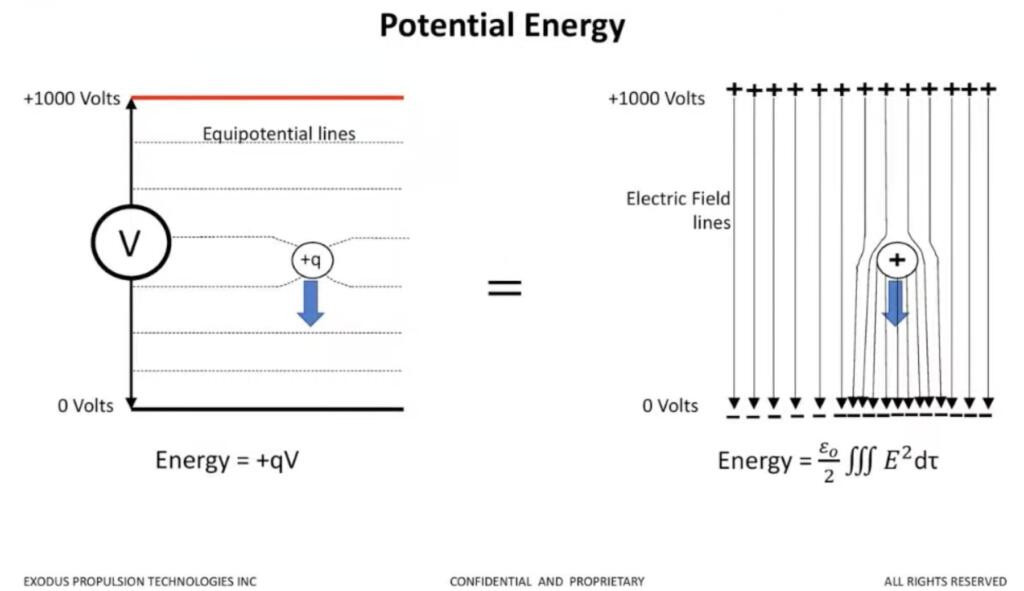 Diagram of Electric Field Manipulation for Thrust
Diagram of Electric Field Manipulation for Thrust
Caption: A conceptual diagram showing how electric fields can be manipulated to generate thrust in advanced propulsion systems.
18. Environmental Considerations
What are the environmental considerations of new propulsion technologies? Environmental considerations are becoming increasingly important in the development of new propulsion technologies. The goal is to develop systems that are not only efficient but also environmentally friendly.
18.1 Sustainable Propulsion
What makes propulsion technology sustainable? Sustainable propulsion technology:
- Reduces Emissions: Minimizes emissions of greenhouse gases and other pollutants.
- Uses Renewable Resources: Employs renewable resources such as solar energy.
- Avoids Hazardous Materials: Avoids the use of hazardous materials.
18.2 Space Debris
How can propulsion technology address the problem of space debris? Propulsion technology can address space debris by:
- Deorbiting Satellites: Developing systems to deorbit satellites at the end of their lives.
- Removing Debris: Creating technologies to actively remove debris from orbit.
- Preventing Debris: Designing spacecraft that minimize the creation of new debris.
19. The Human Element
How do the challenges facing those who want to understand tech relate to advanced propulsion? Many individuals struggle to stay updated with the rapid pace of technological advancements. Understanding complex concepts, assessing potential applications, and finding reliable information can be daunting.
19.1 Bridging the Knowledge Gap
How can we bridge the knowledge gap and make advanced technologies more accessible? We can bridge the knowledge gap by:
- Simplifying Information: Presenting complex information in a clear and accessible manner.
- Providing Education: Offering educational resources and training programs.
- Fostering Collaboration: Encouraging collaboration and knowledge sharing.
19.2 Inspiring the Next Generation
How can we inspire the next generation of scientists and engineers? We can inspire the next generation by:
- Promoting STEM Education: Encouraging students to pursue careers in science, technology, engineering, and mathematics.
- Showcasing Role Models: Highlighting the achievements of successful scientists and engineers.
- Providing Opportunities: Offering hands-on learning experiences and research opportunities.
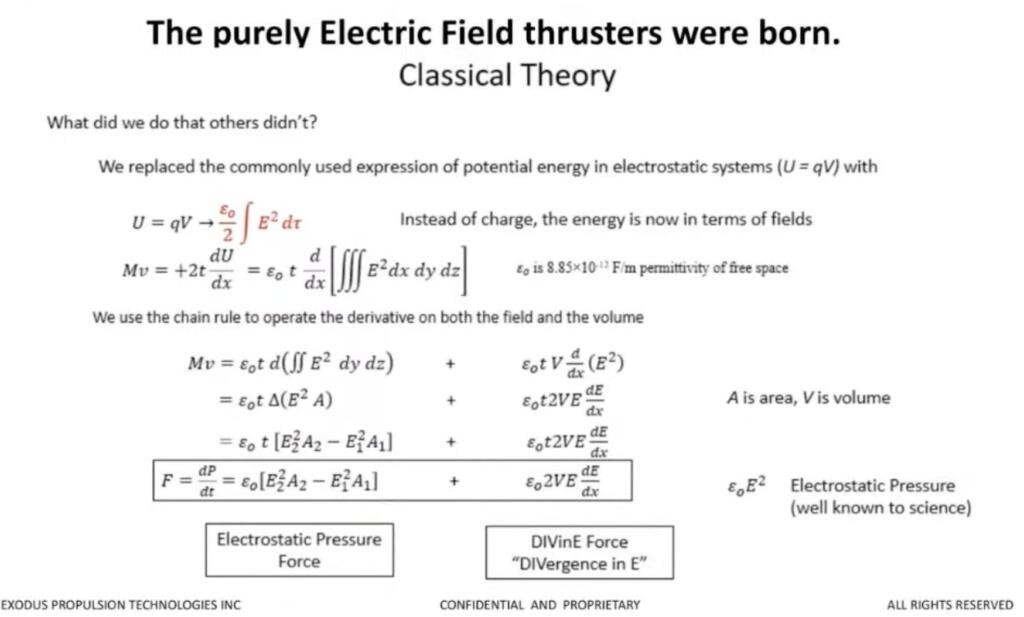 Diagram of Forces Involved in Asymmetrical Electrostatic Propulsion
Diagram of Forces Involved in Asymmetrical Electrostatic Propulsion
Caption: A diagram illustrating the various forces involved in asymmetrical electrostatic propulsion, highlighting the thrust generation mechanism.
20. Pioneer-Technology.Com: Your Guide to Emerging Technologies
Looking to explore more about game-changing technologies like Exodus Propulsion? Pioneer-technology.com is your go-to source for clear, expert insights on the cutting edge. From detailed analyses to the latest news, we break down complex tech to make it accessible and exciting.
20.1 Discover More at Pioneer-Technology.Com
Ready to dive deeper? Visit pioneer-technology.com today to explore our extensive library of articles, stay ahead of the curve, and unlock the future of technology!
FAQ: Frequently Asked Questions about Exodus Propulsion Technologies
Here are some frequently asked questions about Exodus Propulsion Technologies and electrostatic propulsion:
-
What is electrostatic propulsion?
Electrostatic propulsion uses electric fields to generate thrust, differing from traditional fuel-based systems.
-
Is Exodus Propulsion Technologies publicly traded?
No, Exodus Propulsion Technologies is currently a privately held company.
-
Who is Dr. Charles Buhler?
Dr. Charles Buhler is NASA’s subject matter expert on electrostatics and a key researcher at Exodus Propulsion Technologies.
-
What are the potential applications of electrostatic propulsion?
Applications include satellite propulsion, deep space missions, and space debris removal.
-
How does nanotechnology contribute to propulsion technology?
Nanotechnology enables the creation of lightweight structures, high-efficiency electrodes, and advanced sensors.
-
What are the challenges in measuring thrust in advanced propulsion systems?
Challenges include mitigating noise and vibration and ensuring precise experimental setups.
-
What are the environmental considerations of new propulsion technologies?
New technologies aim to minimize emissions, use renewable resources, and avoid hazardous materials.
-
How can pioneer-technology.com help me stay informed?
Pioneer-technology.com provides expert analysis, detailed articles, and the latest news on emerging technologies.
-
What is field-effect propulsion?
Field-effect propulsion uses electric fields to generate thrust by creating an asymmetry around a conductive object.
-
What international agreements govern space activities?
Agreements include the Outer Space Treaty, the Liability Convention, and the Registration Convention.
Ready to dive deeper into the world of pioneering technology? Explore more insights and analysis at pioneer-technology.com today! Discover the innovations shaping our future and stay ahead of the curve.
